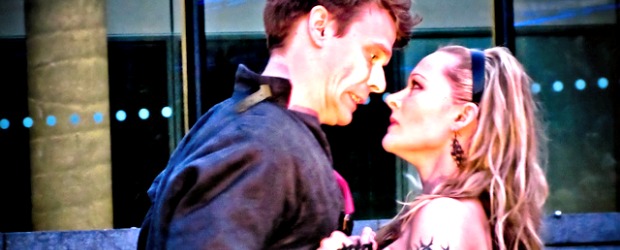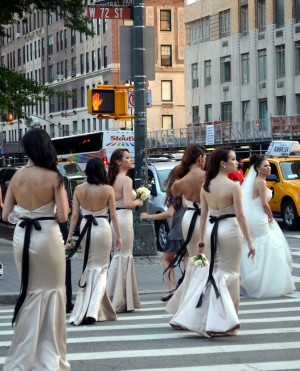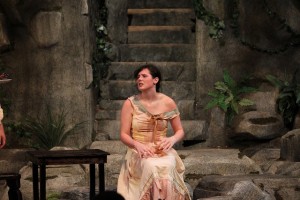You have no items in your cart. Want to get some nice things?
Go shopping
If one types ‘Shakespeare and love’ into Google, then a stack of handily-employed quotations fit for purpose in Valentine’s cards or romantic sound bites quickly appear. But is Shakespeare’s reputation as the chief crafter of love-based snippets as straightforward as it might seem? Is he confined to pastel colours and italicized font in the card aisle of supermarkets or is there something more?
Romeo and Juliet is problematically labelled as one of the greatest love stories of all time; Dire Straits’ 1980 track by the same name assists in perpetuating this assumption (followed by a 2007 cover by The Killers). The phrase ‘star-cross’d lovers’ has been repeated continually and invested with significantly more romantic appeal than its context should perhaps allow for. In dramatic ‘reality’, the events of the play take place over four days. Four days in which two teenagers meet, strike up a romantic attachment, fall ‘horribly in love’ (thanks, Benedick, from Much Ado) and kill themselves because they can’t be together. Does this strike you as an epic love story?
Shakespeare’s representation of love and weddings/marriages across his oeuvre is a multifaceted and complicated one. Romeo and Juliet, The Taming of the Shrew and Macbeth are three works that beautifully highlight the complexities in the presentation of love and marriage. But, of course, it is the translation of these scribed events onto the cinematic screen or the theatrical stage that truly brings this home and challenges the ideas of ‘happy ever after’ endings and superficially shiny love stories. In a number of cases, the wedding (or the hint of a wedding, since no nuptial ceremonies are presented in Shakespearean drama) marks only the beginning of a range of possibilities for couples which are not always happy.

Imagine the scene: an angry father hauls his young daughter in front of a city governor, demanding the death penalty for her disobedience in refusing to marry the man he has chosen for her. The governor reinforces the father’s demands, declaring that the daughter must either marry this man or be executed. After a short contemplation, he adds a third option: joining a nunnery. Seeking solace in her close friend, the daughter flees the city, and her father’s death threats, heading for the countryside with no real sense of apprehension for her actions. A Midsummer Night’s Dream can (on the surface) appear a traditionally ‘comic’ work: the fairies and weddings present this play as a sublime fantasy concluding with a ‘happy ever after’. But probing a little deeper and reconciling the plot elements together, a more sinister undertone appears.
In 2.3 of Twelfth Night, Feste the clown informs Sir Andrew Aguecheek and Sir Toby Belch that ‘journeys end in lovers meeting’. Following Sir Andrew’s approval of ‘excellent good, i’faith’, the clown continues, demanding through song: ‘What is love? ’Tis not hereafter,/ Present mirth hath present laughter:/ What’s to come is still unsure’. This classic example of the Carpe Diem mentality urges lovers to embrace their current situation, where ‘present mirth’ produces ‘present laughter’. The emphasis on the ‘present’, through iambic stresses, parallel phrasing, and repetition, depicts a transient state, where all may quickly alter: the dismissal of the future in ‘’tis not hereafter’ calls into question the finality of how ‘journeys end’. The meeting of lovers appears to function, as the clown notes, as a ‘conclusion’ to a journey. Indeed, this phrase is used in a number of pop culture contexts, including being uttered by Kate Winslet’s character Iris in ‘The Holiday’ (2009). As is prominent in Shakespearean drama, Fools are often the characters who speak wisely, where supposed ‘wise’ characters sometimes act foolishly. Shakespeare is an advocate for flipping assumed stereotypes on their heads.
In thinking about Shakespeare’s ‘works’ (as they are often referred to, in their printed states), it is vital to consider the written words as scripts which are then realised through cinematic or theatrical means. Another play which has succumbed to the assumptions of love is The Taming of the Shrew: ‘kiss me, Kate’, anyone? As the clues of the caskets in The Merchant of Venice provide instructions for interpretation through performance (with Portia figuratively trapped in a box), so too are clues picked up on in The Taming of the Shrew. This technique is presented in the 2005 dynamic BBC Shakespeare Retold production of The Taming of the Shrew. Here, when Rufus Sewell’s twenty-first-century Petruchio makes his decision to marry Katherine, he is trapped with her in an office lift. The space ratio in this scenario vastly favours Petruchio; while Katherine’s nose is pressed almost against the lift doors, Petruchio feels free to move around at his will. As Katherine puts it: ‘we got trapped in a lift and he proposed to me’. This physical ‘trapping’ physicalises the emotional restriction present in this union. In the same production, Shirley Henderson’s Katherine reacts with absolute venom when Petruchio shortens her name, declaring ‘Kate, Kate, my sort of Kate. Kate, Kate, Kate’. In Shakespeare’s play-text this indignation is conveyed when Petruchio calls Katherina ‘Kate’: she contradicts him, and reclaims her name, declaring ‘Well have you heard, but something hard of hearing;/ They call me Katherine that do talk of me’. The shortening of Katherina’s name throughout the process of wooing is a form of restraint in itself.

Shakespeare’s omission of marital ceremonies problematises the use of weddings as intimating this ‘happy ever after’. Film and theatrical directors deal with this ambiguity of marriage in varying ways. Zeffirelli’s production of The Taming of the Shrew appears to cause such concern for the director that an additional scene was inserted to present the wedding. In the play-text, Katherina and Petruchio’s wedding is relayed, second-hand; in Zeffirelli’s production, however, Petruchio stops Katherina’s mouth with a kiss as she is in the process of vehemently exclaiming ‘I do NOT’, in front of the eager wedding congregation, resulting in her indignant and significantly incomplete ‘I do’ being heard by all. This expansion of the play-text portrays an anxiety regarding the lack of closure apparent in the written work: this mouth-stopping is not portrayed by Shakespeare. We can take Zeffirelli’s insertion in one of two ways: either, the recitation of marital vows provides an apparently much-needed, first-hand confirmation of the marriage, or else it intensifies the unsatisfactory match, by further evincing Katherina’s resistance, blocking her verbal (and primary) means of rejection. Elizabeth Taylor presents a superbly feisty and angry Katherina, arguably THE presentation of this character in the Twentieth century.
Turning to a tragedy, and a work which is predominantly characterised by the phrase ‘out, damned spot’, the primary relationship in Macbeth is noteworthy in the ways in which Lady Macbeth tries to influence her husband. One significant point about Macbeth is that the title could refer to one of two characters: does it refer to the warrior or the wife? This remains delightfully ambiguous.
Macbeth can be seen as the archetypal ‘tragic hero’: a man of power, social status, and skill. The deliberate introduction of Macbeth in the war camp, receiving plaudits for his services to the Scottish army, depicts him as the epitome of masculine strength and valour. Macbeth’s confusion becomes evident when his wife questions that selfsame manhood in 1.3, as he retorts ‘I dare do all that may become a man’, following her accusations of his apparent cowardice in the face of proposed regicide. If, in the Renaissance, masculinity was defined by the power to kill, then the art of being a successful husband was certainly equated with the duties of procreation: violence and fertility become increasingly interlinked throughout Macbeth. By Lady Macbeth’s standards, her husband was expected to be a successful warrior and a good husband and father: the essentialism intimated by her repetition of ‘man’ binds these two qualities into the figure of the Renaissance man. Lady Macbeth expects Macbeth to fulfil his ‘biological role’, while simultaneously defying hers.
The lack of a child to orchestrate lineal succession plays a vital role in Lady Macbeth’s actions. Macbeth’s masculinity is constantly questioned by his partner’s repetitions of ‘man’; demanding whether he has the manly qualities necessary for regicide, while reminding him of his presumed infertility and lack of virility. Lady Macbeth’s initial interaction with her husband, once he has returned home following his victory in the war, is one catalyst that contributes to the unfolding ‘tragedy’. Before his return, she communicates her intentions to ‘pour [her] spirits in thine ear’ and ‘chastise with the valour of [her] tongue’. As we see, ‘chastis[ing]’ is the means by which Lady Macbeth means to influence her husband; Judi Dench’s fantastic Lady Macbeth of 1979 (opposite Ian McKellen’s Macbeth) gasps with anticipation, rising from her seat declaring ‘Hie thee hither’. Throughout the play she makes insistent demands on his manhood, berating him whenever possible: ‘When you durst do it, then you were a man; and, to be more than what you were, you would be so much more the man’.
In the feast where Banquo’s ghost appears, instead of lending support to her husband in his time of need, Lady Macbeth condemns his behaviour and hallucinations, demanding ‘Are you a man?’, ‘What! Quite unmann’d in folly?’ While this may indicate embarrassment on behalf of the hostess, her very public indictment of her husband’s actions goes beyond what may be considered a ‘reasonable’ response. This emasculation urges Macbeth into such situations where he can, as he notes at the feast, become ‘a man again’. With his wife’s taunts about his virility still in his mind, he has Banquo murdered whose lineage would supply many kings; following Lady Macbeth’s chastisements, he lays siege to Birnam Wood. Prior to having Banquo murdered, Macbeth seems to attempt to restore the ‘correct’ power balance in his marriage: when Lady Macbeth asks ‘what’s to be done?’ he replies ‘Be innocent of the knowledge, dearest chuck’. Knowing that her husband has been set on the path which she desires, Lady Macbeth appears satisfied to adopt the role of the dutiful, and ultimately feminine wife. Just as she publicly feigned a swoon upon the news of Duncan’s death in 2.4., she is guided by her husband here, and the scene concludes without another word from her.
In the summer of 2013, I saw Macbeth in a deconsecrated church in Manchester starring Kenneth Branagh and Alex Kingston, two actors about whom I am particularly enthusiastic. As a Shakespearean, I do worship at the altar of Kenneth Branagh and his amazing work. In this production, as with every performance of Shakespeare’s plays I’ve ever seen, different themes/elements are highlighted, and you can discover something new with each performance. Branagh and Kingston really played up the sexual side of the Macbeths’ relationship which, as a soldier returning from war, you would expect to be present. This was made manifest through Macbeth’s first action on his return to his Lady; pinning her against the front bench and hiking up her skirt, mud-sodden at the hem. This is an interaction between the two characters which I hadn’t seen before, but which really makes sense. This is the Macbeths as a couple, rather than them being depicted as individual characters, as the murderer and the manipulative wife. This is one of the great things about Shakespeare: you can watch multiple performances of a play (King Lear, in my case), but you will never see the same play twice.
To return to a question I posed in the first paragraph (is Shakespeare confined to the realms of Hallmark?), these multi-dimensional representations of relationships confirm Shakespeare’s position as a crafter of more fully-formed presentations of love. Rather than reducing his works to being seen as Hallmark-card-appropriate, recognising the full package is paramount. Simultaneously, another great thing about Shakespeare is that there are few ounces of moral undertones in his works. Rather than dictating audience response, it is left to us to decide if there is a ‘message’ or not, about love, relationships or other themes. My answer to the question would be a resounding ‘no’.


About Anna Mackenzie
Anna Mackenzie is a final year PhD student (gender and genre in Shakespeare) and Visiting Lecturer in the English Department at the University of Chester. Anna has had her poetry published in national and international poetry magazines and in an anthology for the Cheshire Prize for Literature. Anna is also Editorial Assistant for the 'Archaeological Journal' and has plans to write about Shakespeare and Doctor Who upon completion of her PhD

